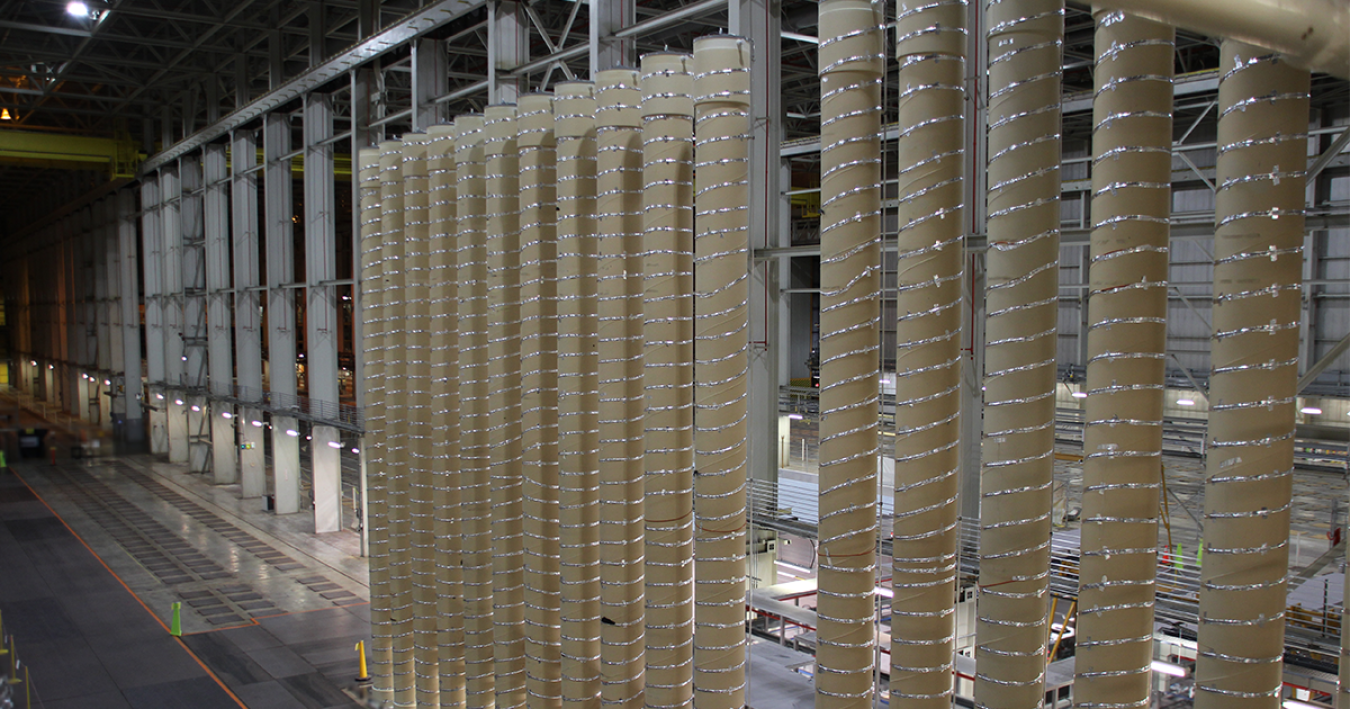Ohio HALEU demonstration project key to successful development of advanced reactors.
February 1, 2023
Advanced centrifuge cascade in Piketon, Ohio.
From building the ships that helped win World War II to assembling the cars that keep America running, Ohio has a rich tradition in manufacturing and a well-deserved reputation for getting things done.
There is a significant amount of work to do in support of our nation’s energy security, and Ohio will continue to be critical to these efforts.
The Bipartisan Infrastructure Law and Inflation Reduction Act are investing billions in climate provisions to support the goal of decarbonizing the electric grid by 2035 and achieving net-zero emissions by 2050.
These new laws are incentivizing a major push to deploy clean energy technologies across the country and that includes nuclear power.
Nuclear in Ohio
Nuclear energy is not new in Ohio.
The state’s two reactors at Davis-Besse and Perry provide 14 percent of Ohio’s electricity. They also generate 83 percent of its clean power, support 1,400 local jobs, and contribute millions each year through state and federal taxes that help fund local infrastructure projects and schools.
Preserving these plants is crucial to our climate goals and energy security as we work to deploy a new generation of reactors in the near future.
A Pressing Need for HALEU
Advanced reactor designs may be smaller in size, more efficient, and flexible in operation. They may also be capable of operating at higher temperatures to produce heat and power for non-electric applications like clean hydrogen production that can open up new markets for the industry.
Many of these designs require a higher enriched fuel that isn’t commercially available at scale. It’s called high-assay low-enriched uranium, or HALEU for short, and we have a pressing need for it.
The U.S. Department of Energy selected American Centrifuge Operating, a subsidiary of Centrus Energy, to demonstrate HALEU production at the Department’s enrichment facility in Piketon.
Since 1952, this community has fielded a knowledgeable and experienced workforce to support uranium enrichment operations.
The Piketon plant is the only facility in the nation licensed by regulators to enrich uranium up to HALEU levels of 19.95 percent. It also supports more than 100 local jobs that will be crucial to this demonstration and the success of the nuclear industry at-large.
Demonstrating HALEU Production
The demonstration builds on a previous three-year project with Centrus to manufacture and assemble 16 advanced centrifuges and install them into an enrichment cascade. Now the focus is shifting to start up and operation—a crucial first step in setting the stage for larger, commercial-scale production in the United States.
Centrus plans to produce 20 kilograms of HALEU by the end of 2023, with operations expanding to a production rate of 900 kilograms per year beginning in 2024.
The material will be used to help fuel the initial cores of two demonstration reactors awarded under our Advanced Reactor Demonstration Program. It will also help qualify new fuel types and test new reactor designs.
This demonstration will adhere to all requirements set forth by federal and state regulators, and we’re committed to robust monitoring and transparent reporting systems to ensure safe operations at the facility.
The ultimate success of this demonstration will fuel a new wave of nuclear energy innovation. Ohio already has an impressive track record of driving big, nationally significant projects like this forward.
From standing up a new EV battery plant in 2025 to demonstrating clean hydrogen production at Davis-Besse, it looks like the path to America’s clean energy innovation is running through the Buckeye State.
Dr. Michael Goff

Dr. Michael Goff is the Principal Deputy Assistant Secretary for the U.S. Department of Energy’s Office of Nuclear Energy. Prior to joining the office as the PDAS, Dr. Goff was on assignment from Idaho National Laboratory (INL) to the Office of Nuclear Energy, where he was serving his third term as senior advisor to the Assistant Secretary. Dr. Goff also served a multi-year assignment as the assistant director for Nuclear Energy/Senior Policy Advisor in the Office of Science and Technology Policy in the Executive Office of the President. He has held several management and research positions over more than 30 years at INL and Argonne National Laboratory.
Dr. Goff has more than 70 publications related to the nuclear fuel cycle including separations technology, high-level waste development, and safeguards. Dr. Goff has a bachelor's degree of nuclear engineering (1986), a MSNE (1988), and a Ph.D. in nuclear engineering (1991), all from Georgia Tech.


